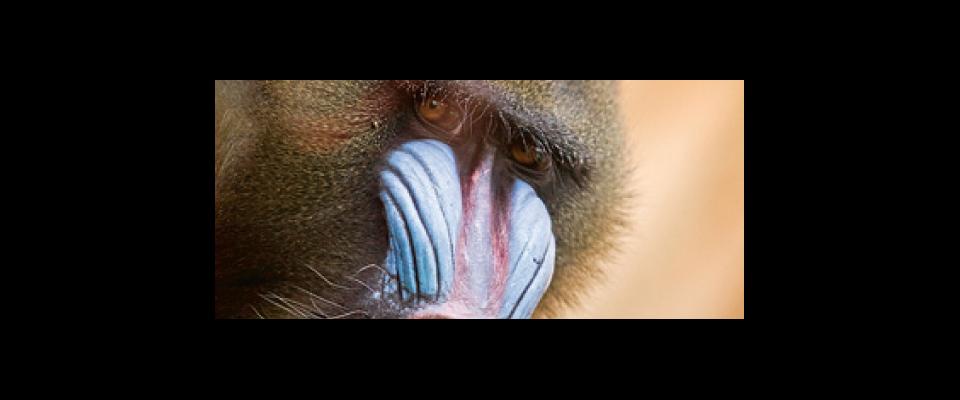Researchers mimic the formation of natural tissues in the laboratory.
Visit the San Francisco Zoo and the vibrant blue face of the mandrill is sure to catch your attention. But when the researchers from Seung-Wuk Lee’s Bio-Nanomaterials Lab visit the same creature, they see the unique properties of collagen, and a promising new therapy.
The mandrill’s coloration comes not from a pigment, but from a specific assembly of collagen molecules that reflects blue light. These same proteins make up much of the human body, including our bones, skin, and the cornea of our eyes. Their immense versatility is regulated through a process called “self-templating assembly.” In theory, scientists should be able to control self-templating assembly by altering the conditions in which it occurs. If they succeed, the researchers will be able to repair corneal, bone, or skin tissue.
But collagen has proven difficult to work with. It’s like making beef broth, explains Lee. Heat breaks down the proteins in bones and skin, but once it cools, it congeals into a uniform gel. Once broken apart, the mass of proteins doesn’t readily return to its previous arrangement.
Lee and his colleagues found a surprising solution: the M13 phage, a virus that is strikingly similar to a collagen fiber, but that is much easier to manipulate in the lab. So far, the researchers have achieved assemblies similar to those in our bodies, as well as some unique to the laboratory environment. However, Lee says they are still a long way from adapting these techniques for use in medicine. For example, more work is needed on ensuring the human body does not reject the phages.
Furthermore, because the M13 phage is more easily manipulated, Lee anticipates he and his team will be able to replicate other properties unique to collagen. In the human body, the protein can produce electricity in response to motor activity, which works to stimulate collagen production and increase bone density when you exercise. Lee’s lab is currently trying to replicate this capability using viruses, hoping to make materials that generate energy in non-biological contexts. So the Mandrillus sphinx‘s complexion might serve as inspiration for tissue regeneration. Next time you see a mandrill, say thanks.



















